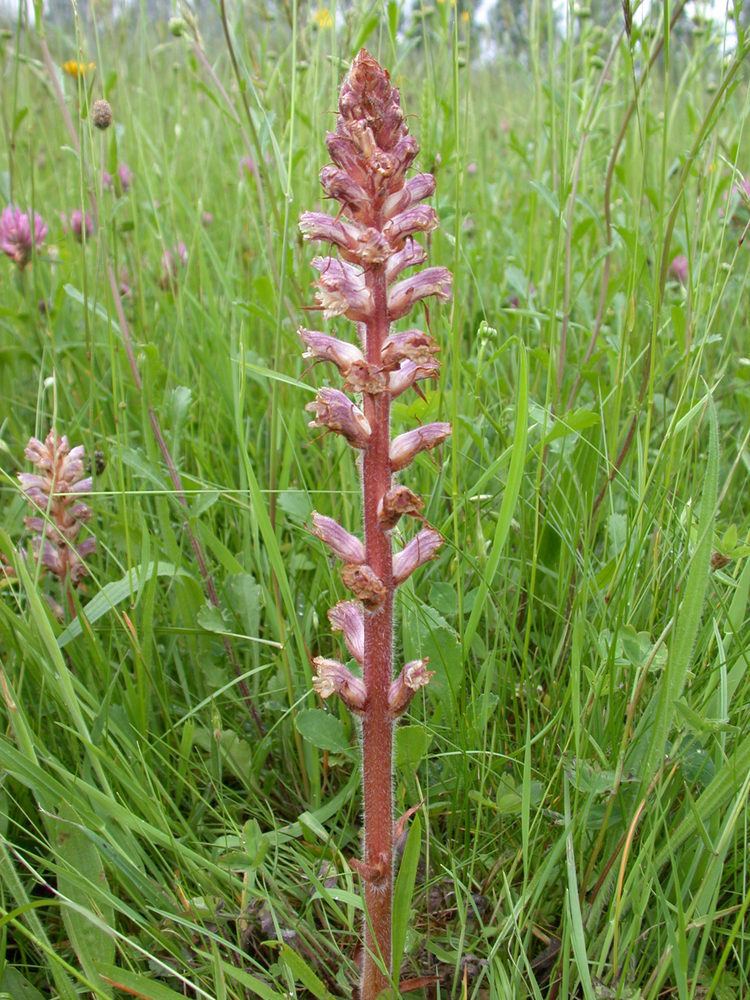Higher classification Orobanchaceae | Scientific name Orobanche Rank Genus | |
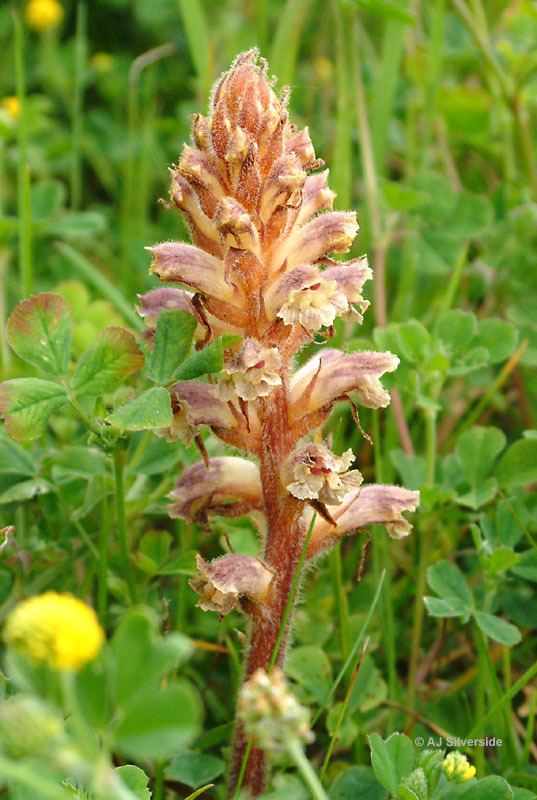 | ||
Lower classifications Orobanche ramosa, Orobanche minor, Phelipanche aegyptiaca, Orobanche uniflora, Orobanche fasciculata | ||
Orobanche plant parasite
Orobanche (broomrape or broom-rape) is a genus of over 200 species of parasitic herbaceous plants in the family Orobanchaceae, mostly native to the temperate Northern Hemisphere. Some species formerly included in this genus are now referred to the genus Conopholis. The broomrape plant is small, from 10–60 cm tall depending on species. It is best recognized by its yellow- to straw-coloured stems completely lacking chlorophyll, bearing yellow, white, or blue snapdragon-like flowers. The flower shoots are scaly, with a dense terminal spike of between ten and twenty flowers in most species, although single in O. uniflora. The leaves are merely triangular scales. The seeds are minute, tan-to-brown, and blacken with age. These plants generally flower from late winter to late spring. When they are not flowering, no part of the plants is visible above the surface of the soil.
Contents
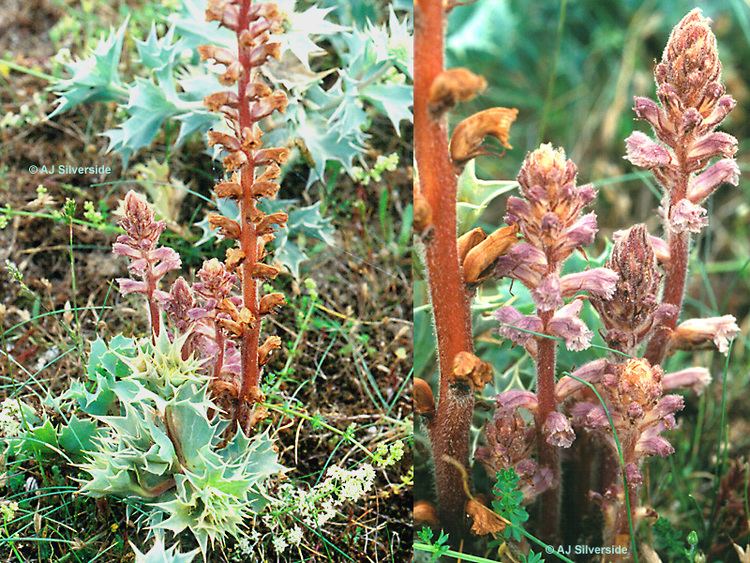
As they have no chlorophyll, they are totally dependent on other plants for nutrients. Broomrape seeds remain dormant in the soil, often for many years, until stimulated to germinate by certain compounds produced by living plant roots. Broomrape seedlings put out a root-like growth, which attaches to the roots of nearby hosts. Once attached to a host, the broomrape robs its host of water and nutrients.
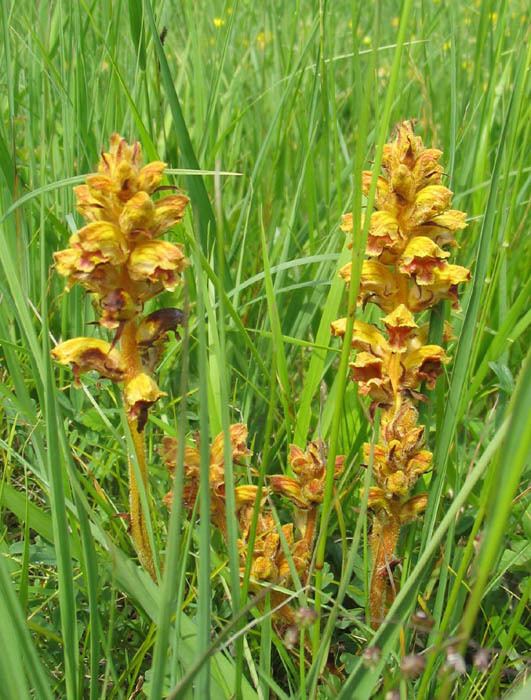
Some species are only able to parasitise a single plant species, such as ivy broomrape Orobanche hederae, which is restricted to parasitising ivy; these species are often named after the plant they parasitise. Others can infect several genera, such as the lesser broomrape O. minor, which lives on clover and other related Fabaceae.
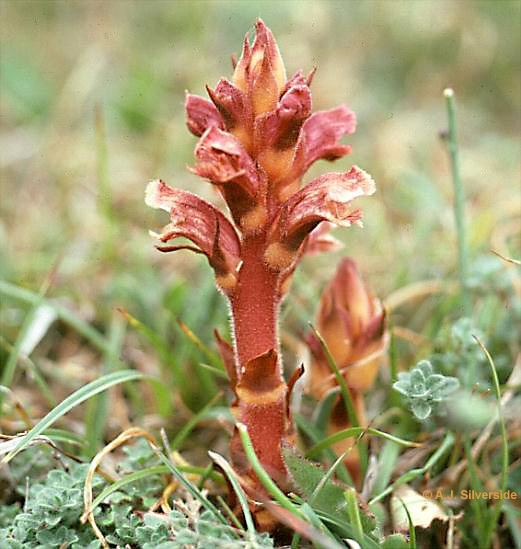
Branched broomrape Orobanche ramosa, native to central and southwestern Europe but widely naturalised elsewhere, is considered a major threat to crops in some areas. Plants that it parasitizes are tomato, eggplant, potato, cabbage, coleus, bell pepper, sunflower, celery, and beans. In heavily infested areas, branched broomrape can cause total crop failure.
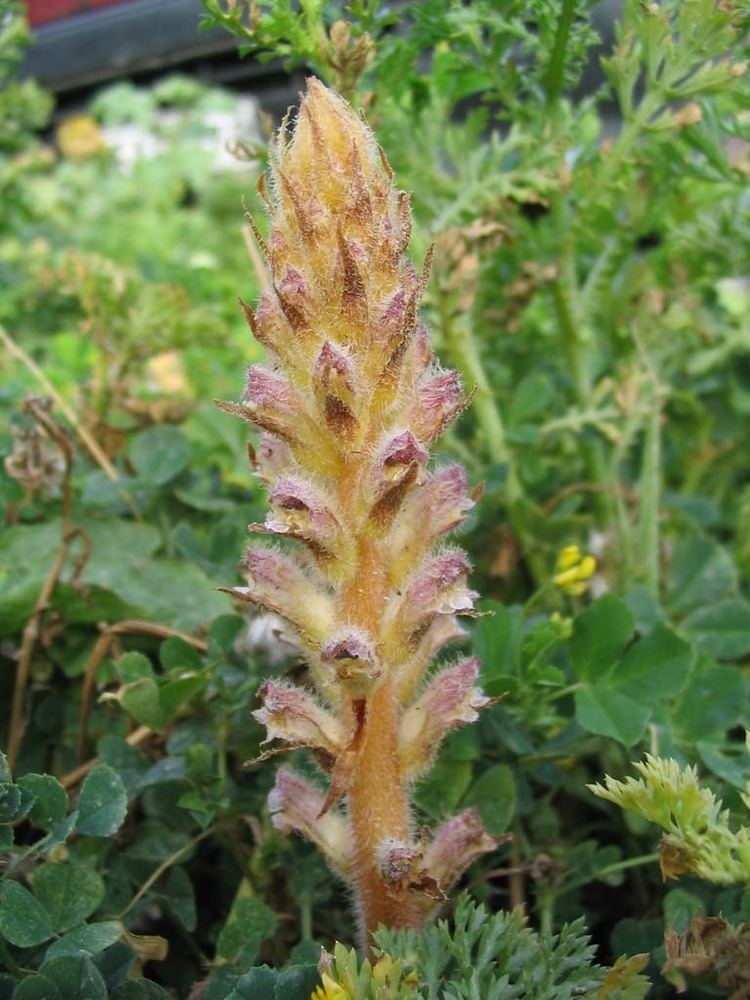
The stems of a species parasitic on the fava bean are gathered and eaten in the region of Apulia, in southern Italy, where they are given the name of sporchia.
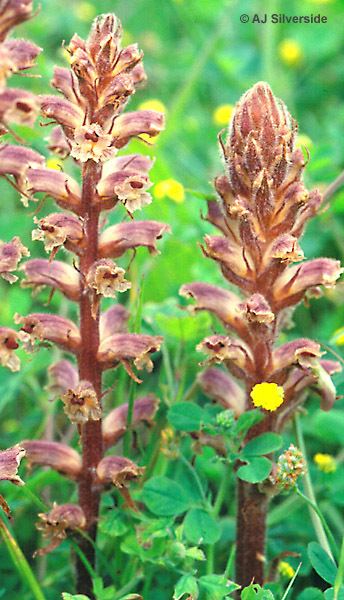
Orobanche esulae time lapse
Etymology
The scientific name comes from Ancient Greek ὄροβος (orobos, “bitter vetch”) + ἄγχω (ankhō, “strangle”). The common English name comes from the English word broom, and the Latin rapum ("tuber").
List Sources :